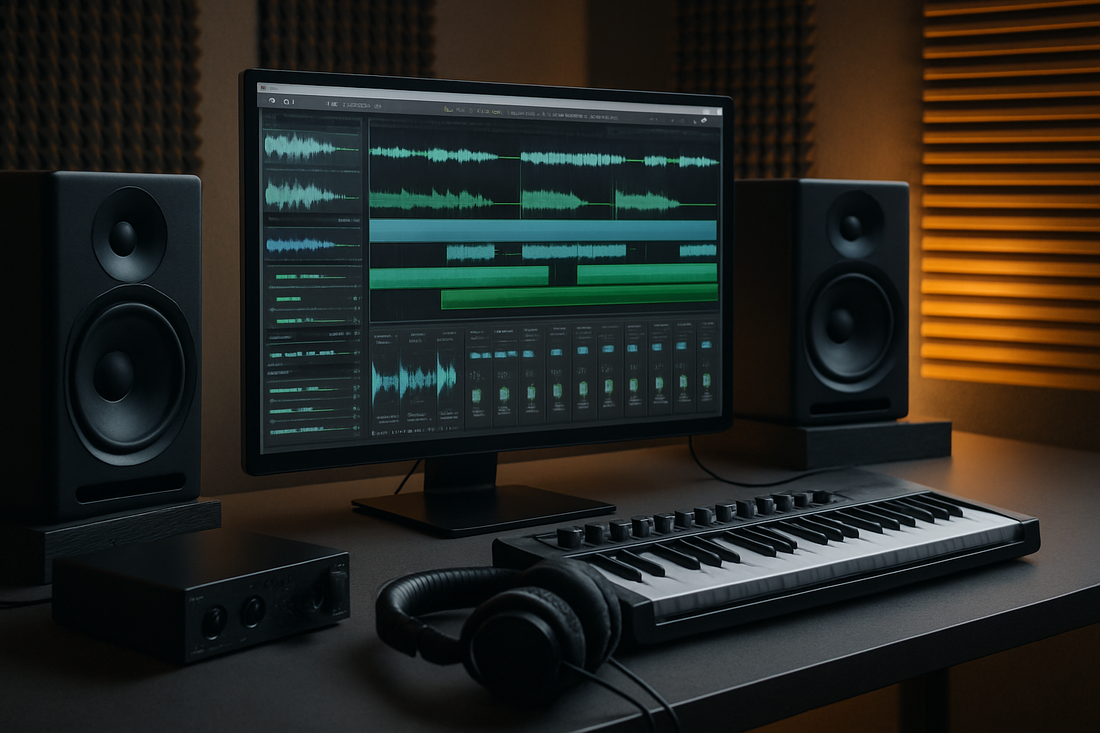
How to Strum MIDI Chords to Add Humanisation to Your Tracks
Share
One of the biggest giveaways that a song was made entirely in-the-box is when MIDI chords sound too perfect. Every note lands at the exact same millisecond, at the exact same velocity, with robotic precision. While this can work for certain electronic styles, genres like hip hop, lo-fi, R&B, and soul thrive on feel. That’s where adding a strum effect to your MIDI chords can instantly breathe life into your progression.
What is MIDI Strumming?
When you play chords on a real guitar or keyboard, your fingers naturally don’t hit every note at the exact same time. Even if the difference is only a few milliseconds, that slight stagger creates a natural groove and texture. MIDI strumming is the digital way of recreating this effect by shifting the timing of notes in a chord, so they don’t all play simultaneously.
Why Strum Your MIDI Chords?
- Adds Groove – A staggered chord feels more alive and rhythmic.
- Removes Stiffness – Perfectly aligned notes can feel mechanical; strumming adds human imperfections.
- Genre Authenticity – Lo-fi, R&B, and hip hop often aim for a warm, organic feel. Strumming helps you achieve that instantly.
- Layering – Strummed chords can sit better under vocals, melodies, and basslines because they blend more smoothly into the mix.
How to Strum Chords?
Select the Notes – Highlight all the notes of your chord in the piano roll.
Apply Strum – On the MPC, there isn't a built-in "strum" tool like FL Studio has, but the method is the same:
- MPC workflow: you manually select each note of a chord in Grid Edit, then nudge them slightly forward in time so they don't all trigger at once. You can also shorten or lengthen start/end times to make the strum more realistic.
- DAWS (FL, Ableton, Logic, etc.) many have strum or randomize functions to speed this up.
Control the Timing – Start small: try pushing each note a few milliseconds apart. Too much strum can sound sloppy, but just the right amount adds groove.
Vary the Velocity – Human players don’t strike every note with equal force. Adjust velocities to further humanize the chord.
Experiment with Direction – Try strumming upwards (lowest note first) or downwards (highest note first) depending on the mood you want.
Bonus Tips
- Combine strumming with swing or groove settings for even more realism.
- Strum only certain chords in your progression to keep variety.
- Layer strummed MIDI chords with atmospheric sounds (pads, keys, guitars) for extra depth.
Final Thoughts
Strumming MIDI chords is a simple but powerful way to humanize your music. Instead of rigid, mechanical blocks of sound, your chords will flow more like a real performance. The beauty of this technique is that you can control exactly how subtle or obvious the effect is—whether you want just a hint of looseness or a heavily staggered, soulful texture.
Next time your chord progression feels flat, try adding a touch of strum. Your listeners might not notice the tweak consciously, but they’ll feel the difference.
